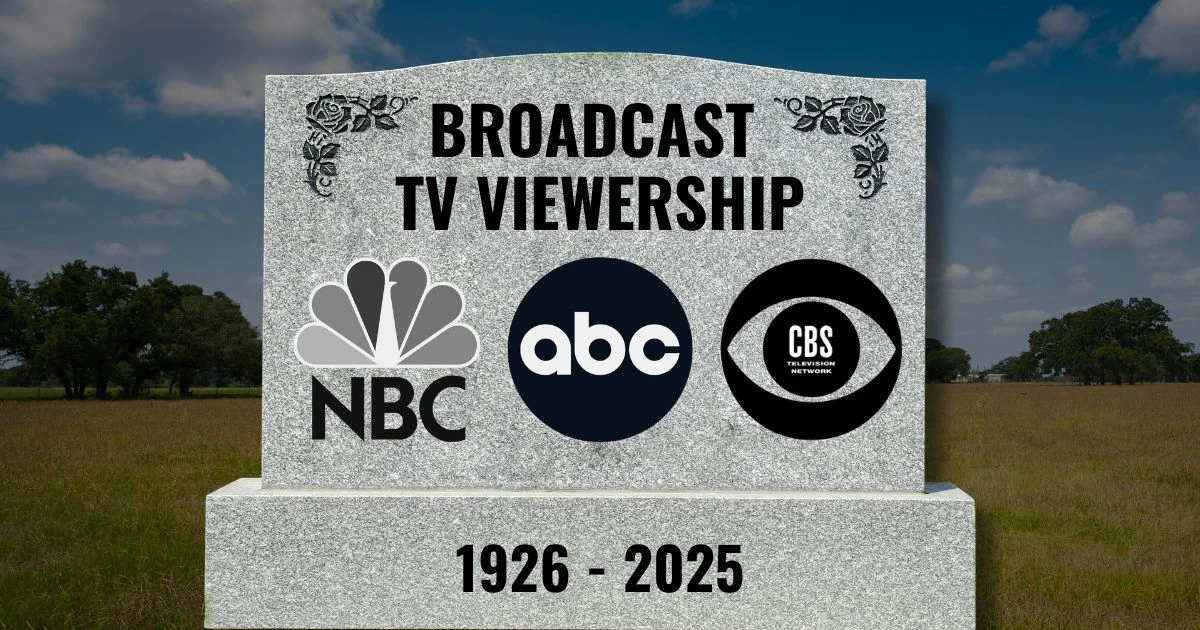The steady decline of traditional broadcast television shows no signs of slowing down, as recent Nielsen data indicates a continuing drop in viewership across major networks. Over the past five years, once-dominant primetime lineups on ABC, CBS, NBC, and Fox have struggled to retain audiences, particularly among younger demographics.
While factors like cord-cutting and increased competition from cable networks have long affected broadcast ratings, a more profound shift has emerged from the rapid rise of streaming services and digital platforms such as YouTube. This disruption has transformed how and where audiences consume content, as well as what they consider “must-watch” programming.
YouTube’s Impact on Viewing Habits
Since 2019, YouTube has become a dominant force in entertainment, especially among younger viewers. With billions of hours of content consumed daily, YouTube has surpassed traditional television in delivering personalized, on-demand programming. Nielsen’s 2024 Gauge report shows that YouTube now accounts for the largest share of streaming viewership in the U.S., outpacing even Netflix.
This shift has captured significant portions of the under-35 audience from broadcast TV, as viewers increasingly favor creators, influencers, and short-form videos instead of scheduled television shows. As a result, major networks are witnessing double-digit percentage drops in viewership among key advertising demographics year after year.
Streaming Services Have Fragmented the Audience
The proliferation of subscription-based streaming services—such as Netflix, Hulu, Disney+, Peacock, and Max—has further fragmented the television landscape. Between 2020 and 2025, the number of Americans subscribing to at least one streaming platform surged from roughly 200 million to over 300 million accounts, many of which are shared across households.
This widespread adoption of streaming has changed the definition of television “ratings.” Viewers now often watch programs days—or even weeks—after their original air date, if they watch them at all. This makes traditional overnight Nielsen ratings less reflective of a show’s actual popularity or cultural relevance. Streaming platforms frequently release full seasons at once, encouraging binge-watching habits that bypass traditional appointment viewing.
Advertising Dollars Are Following the Audience
As viewership migrates to YouTube and streaming services, advertising revenue is following suit. Broadcast networks are struggling to compete with the precise targeting and performance analytics offered by digital platforms. According to Insider Intelligence, YouTube is expected to generate over $40 billion in ad revenue globally by 2025—far surpassing the combined primetime ad revenue of all four major U.S. broadcast networks.
This financial shift has forced broadcasters to adapt, often by launching their own streaming platforms (like Paramount+ and NBC’s Peacock) or simulcasting live events online. Nevertheless, these efforts have yet to fully stem the ratings decline or recapture the engagement levels seen in the early 2000s.
The Future of Broadcast: Live Events and Niche Audiences
Experts suggest that the future of broadcast television may depend on live programming, such as sports, award shows, and breaking news—content that benefits from real-time viewership and is harder to replicate on demand. However, even these categories are increasingly being encroached upon by streaming platforms with exclusive sports rights and real-time coverage options.
In summary, the last five years have marked a turning point in the media landscape. Traditional broadcast television, once the centerpiece of American home entertainment, is now one of many options competing for attention in a digital-first world. As younger viewers grow up in an era defined by TikTok trends and YouTube vlogs, the question for networks isn’t just how to regain viewership—it’s whether broadcast TV can remain culturally relevant at all.
*This story was originally published on FloridaDaily.com
















